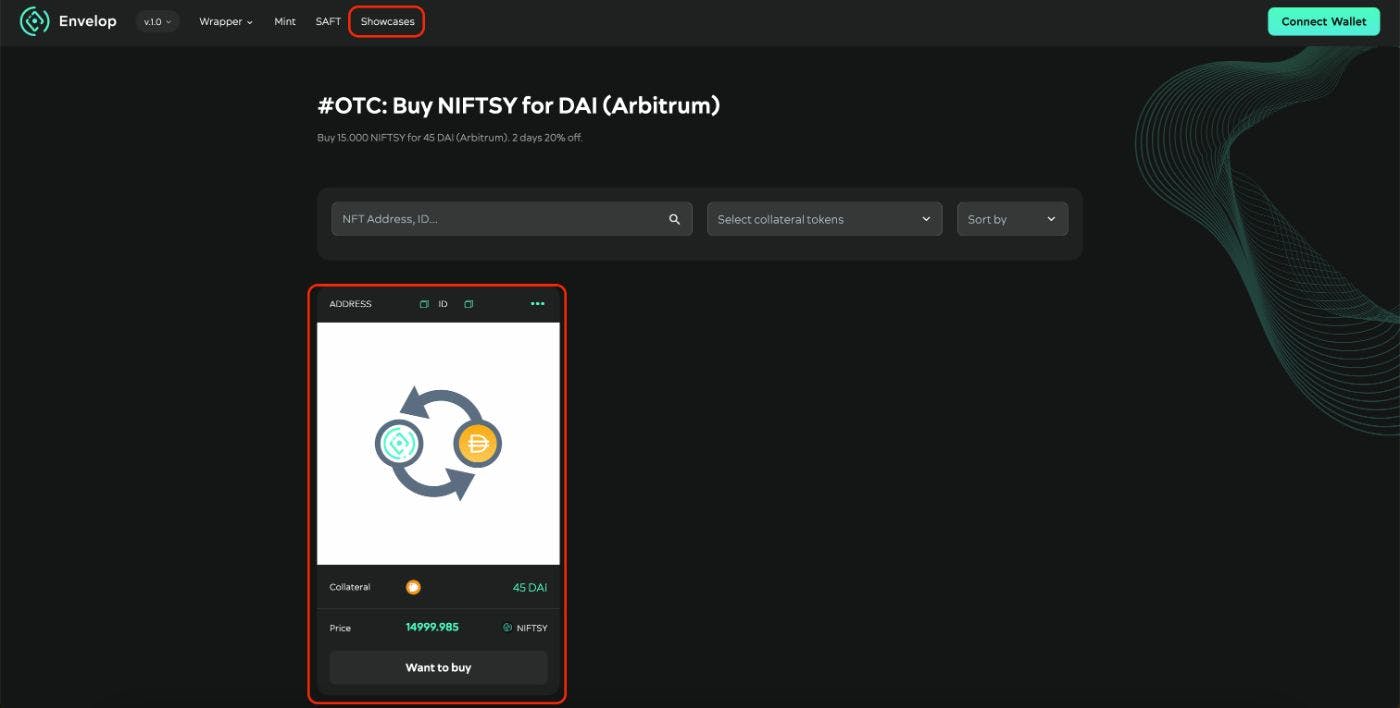
**Imagine a scenario where you store coins or tokens in your wallet in jars, similar to the ones you would use in your pantry or kitchen.
**
In the first jar or envelope, I'll put 100 DAI for monthly subscriptions, in the second jar I'll put 1000 DAI for a long-awaited purchase, and in the third jar - 1 ETH, 2000 DAI, and 1000 USDC for investment.
It's important to separate household, investment, research, etc. wallets to enhance security, but within these wallets, there may also be a need to separate tokens into envelopes.
The wrapNFT, a type of NFT 2.0, will assist us in this task.
Let's create these piggy banks/envelopes using the DAO Envelop protocol.
Disclaimer: I am not giving financial advice. You should DYOR to decide whether to interact with the protocol. In this article, I only share my experience and nothing more.
Let's get started.
- Go to the wrapper page and switch to advanced mode. You can wrap an existing NFT (then wNFT will inherit all metadata) or an "empty" one.


-
In the "Advanced options" tab, you can select the properties of the future wNFT: "unwrapping" permanently blocks tokens inside the wNFT, "adding collateral" prohibits adding new tokens, "transferring" prohibits transferring the wNFT to anyone (SoulBound Token).
In the "wNFT Recipient" field, enter your wallet address, as we want to send the wNFT to ourselves, not someone else.

-
Now, let's move on to topping up the collateral. You can enable up to 25 collateral top-up cells, meaning you can deposit up to 25 different tokens if you wish. Contribute the desired number of tokens to the collateral.


- We can then specify a time-lock for wNFT if desired. During this time, the collateral cannot be unwrapped.

- Your wNFT envelope is now ready. You can add more tokens at any time.


You can store such envelopes in your wallet or exchange them for other tokens via OTC without KYC. On the same DAO Envelop, you can put wNFT on the showcase for sale.

It might be useful for someone to store tokens in wNFT from a mobility perspective. For example, if you want to change your wallet, instead of transferring nine different tokens across three networks, you could send three wNFTs.
If you suspect your wallet has been compromised, you can quickly send a wNFT with liquidity and unwrap it on the new wallet.
Share your thoughts in the comments. Good luck with your research!
如有侵权请联系:admin#unsafe.sh